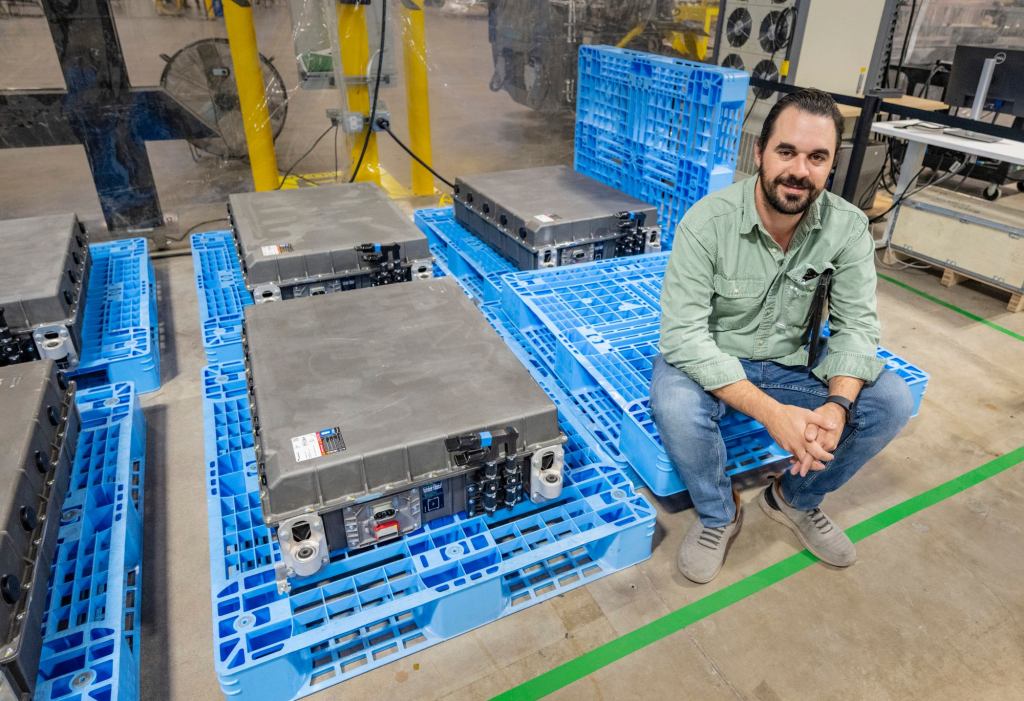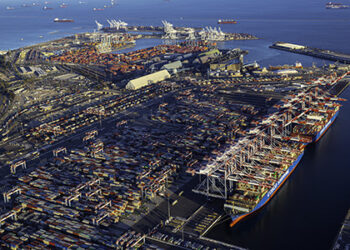Robert Sanchez sits in a truck cab surrounded by LED display screens that show him battery and hydrogen levels in the nearly year-old, zero-emission Nikola-made truck.
His job on this day involves hauling containers from the congested TraPac terminal in the Port of Los Angeles to a storage yard near the port. Sanchez will use a charging station on Terminal Island’s Pier S to refuel the $400,000 big-rig.
The charging station, a partner between 4 Gen Logistics and Electrify America, is part of the port complex’s strategy to reach zero emissions by 2035. The truck Sanchez is driving is one of hundreds of such next-generation vehicles that are part of a small but growing electric-truck ecosystem taking shape in California ahead of broader zero emission mandates.
Sanchez’s Class-8 EV drayage truck can travel about 350 miles when it’s fully charged, hydrogen-fueled and loaded with 80,000 pounds of goods. Stops include Inland Empire distribution centers for Procter & Gamble in Moreno Valley or the sportswear company United Legwear & Apparel Co. in Beaumont.
The 90-mile drive isn’t always a smooth one.
The EV truck and its nascent technology sometimes shows error messages like “loss of propulsion” or fuel cells about to shut down.
When this happens, Sanchez has to pull over and reboot the truck. If the reset doesn’t work, the next call is to Nikola for a tow truck.
“It’s like a computer on wheels. We’re still working through some of the bugs,” said David Thornburg, a contractor with 4 Gen Logistics in Rialto who helped assembled the company’s fleet of 79 EV trucks.
4 Gen Logistics is one of myriad EV truck startups in Southern California that are taking advantage of billions of dollars in investor capital and government subsidies aimed at electrifying the nation’s massive truck fleet.
Growing pains
The commercial EV truck industry is still taking baby steps to overcome myriad technological challenges.
“All developmental vehicles go through growing…
Read the full article here







